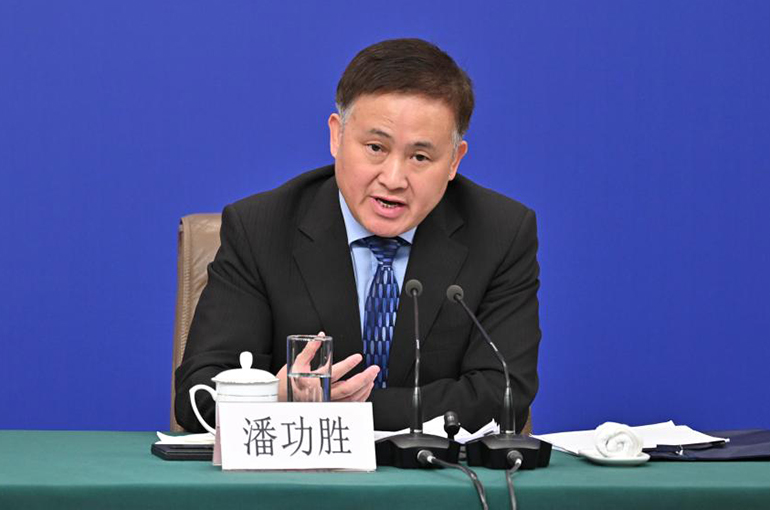 China’s Central Bank to Step Up Counter-Cyclical Adjustments, Governor Says
China’s Central Bank to Step Up Counter-Cyclical Adjustments, Governor Says(Yicai) Nov. 12 -- China’s central bank will enhance counter-cyclical adjustments to shape favorable conditions for the country’s stable economic growth and high-quality development, its governor has said.
The People’s Bank of China will continue with its supportive monetary policy stance, while enhancing both the intensity and precision of policy regulation, Pan Gongsheng said yesterday in a report to the Standing Committee of the National People's Congress, China's top legislative body.
Counter-cyclical adjustments are economic policies or actions taken by governments, central banks, or other institutions to stabilize the economy during different phases of the business cycle.
Pan highlighted the importance of improving the precision of these adjustments, effectively implementing existing policies, and accelerating the roll-out of new measures to ensure reasonable liquidity and lower financing costs for businesses and households.
To boost the economy and lift market confidence, the government recently announced a hefty stimulus package that included trimming mortgage rates and the creation of a special relending facility for stock buybacks. The results are already being seen.
There are signs of stabilization in the property sector, with fewer homeowners seeking to repay mortgages early now that rates have fallen. The demand for corporate financing is also warming up, and market participants have shown strong interest particularly in two measures to support the stock market and boost market vitality. These are the swap facility, which gives non-bank financial institutions access to funding to buy shares, as well as stock repurchases.
Social expectations and market confidence will continue to improve under the series of new measures, according to industry experts, leading to greater demand for financing. As some policies are still being implemented, their effects are expected to become more apparent in the future.
The central bank will step up the quality and efficiency of financial services while strengthening support for high-quality economic development, Pan also said. This includes increased financial backing for new productive forces, nurturing long-term investments, and promoting the growth of technology innovation bonds and green bonds.
The PBOC will continue implementing structural monetary policy tools to support major strategies and key sectors, Pan added. The central bank will also strengthen macro policy coordination among monetary, financial, fiscal, industrial, and employment policies.
Regarding opening-up, Pan said the PBOC will deepen financial reform and accelerate the development of a modern financial system with Chinese characteristics, including improvements to the execution mechanisms of monetary policy and market-based interest rate formation.
Risk prevention remains a key task. The central bank will take measured steps to prevent and resolve financial risks while maintaining overall financial stability, Pan said. This includes establishing early risk correction mechanisms and continuing to address the debt risks of local government financing vehicles through market-based transformation.
Editor: Kim Taylor